A 22-year-old man who has heard for more than a decade of his soldier father’s bravery, leadership, sacrifice and love for his family and fellow soldiers will receive the nation’s highest honor for battlefield valor Wednesday.
The posthumous Medal of Honor presentation to Trevor Oliver, son of the late Staff Sgt. Travis Atkins, marks what his family and brothers in arms see as fitting for a man they saw show his character long before he sacrificed his life to save his soldiers on June 1, 2007.
Elaine Atkins was recently digging in the dirt of their family land near Bozeman, Montana to plant flowers and pulled up a few of the classic toy green Army men her son played with as a boy. Those pieces of plastic evoked flashing memories of her son, which resonate daily since she lost him a dozen years ago. A headstone rests near the base of a tree on their property with Travis’ name and the medals he won.
Her outdoorsy son roamed the woods hunting with his father Jack Atkins and snowmobiling in the winter months. Jack had served four years in the Army, part of that time in the early stages of the Vietnam War.
RELATED
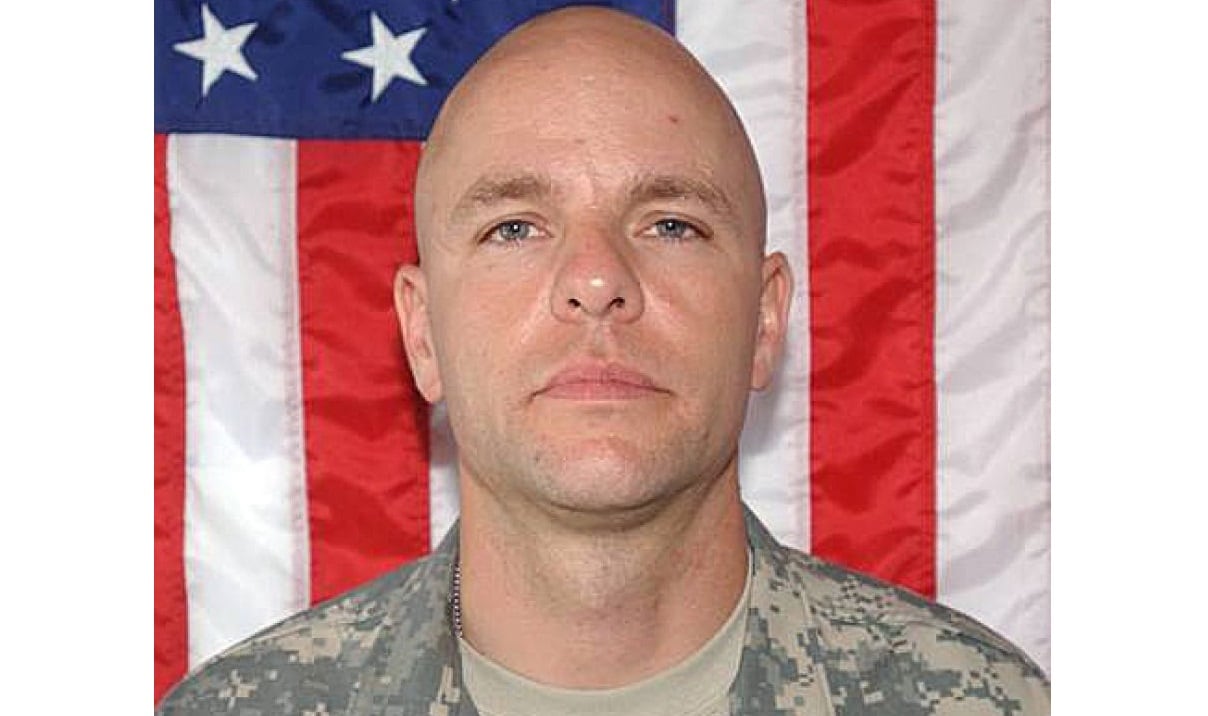
It wasn’t until he was in his early 20s, though, that Travis started talking about joining. Jack recalls a late-night talk when Travis stayed up with a friend who’d served as a pilot in Vietnam. But the stories that friend shared of his previous combat, as an enlisted man during the Korean War, captivated Travis.
So in November 2000, Travis joined the Army. Elaine found out later that he had traveled to the Military Entrance Processing site in Butte, Montana, ready to ship off to basic training.
But there was a hiccup.
His recruiter had assured him that he would be airborne infantry and that he could request the 82nd Airborne Division. But the staff at the MEPS said his ASVAB scores were high and they wanted him for helicopter maintenance.
“So, Travis being Travis put his hands on the desk and leaned over into this recruiter’s face and said, ‘I’m not going to helicopter maintenance school,” Elaine said. “And then he said, ‘give me a quarter.’”
The recruiter asked what he wanted a quarter for.
Travis told him if they were going to send him to that school he’d call his parents to come get him.
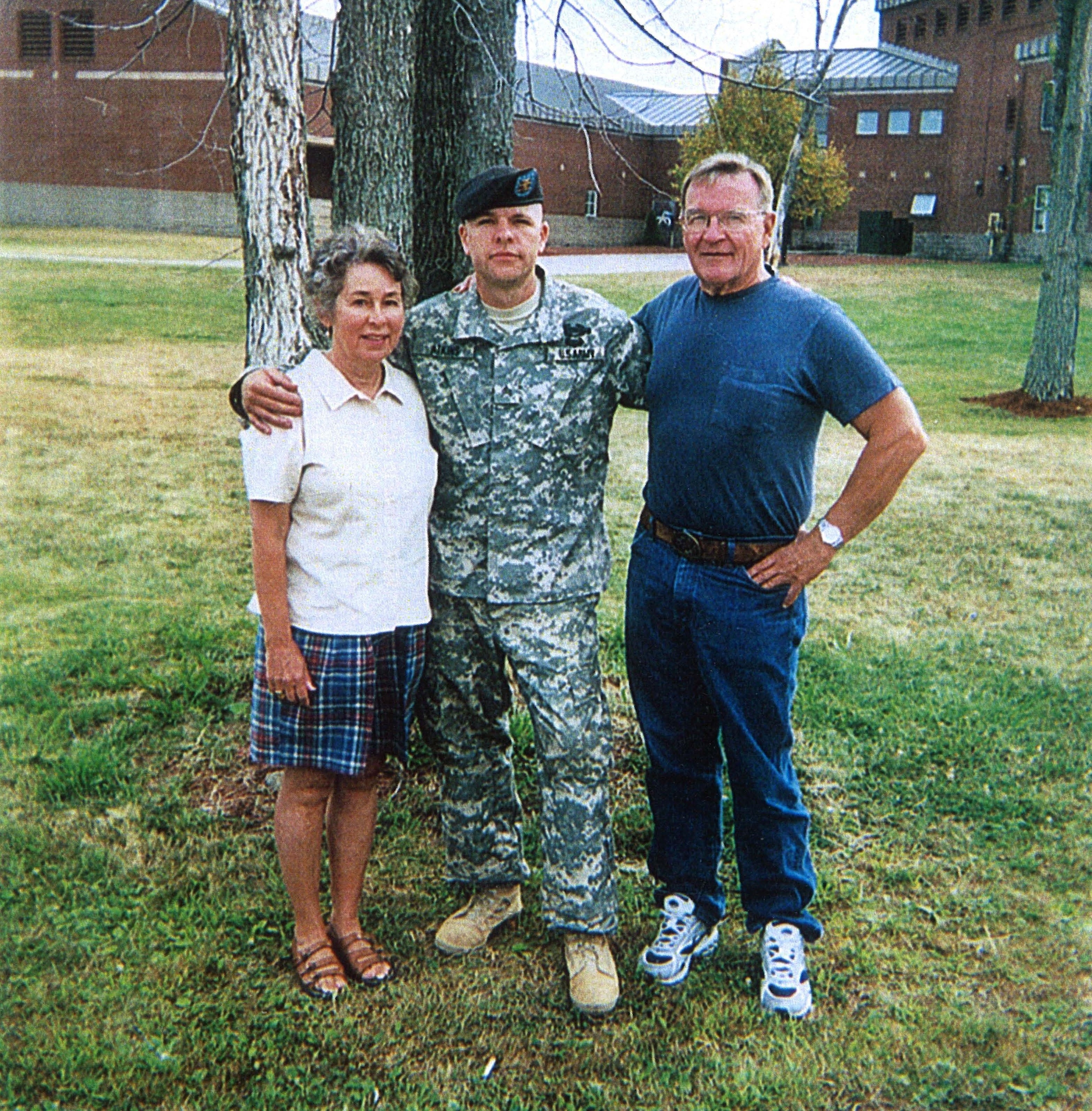
The recruiter put his hands on the desk and said you’re going to helicopter maintenance school or I’m sending you to Fort Benning, Georgia, basic training for infantry.
“And Travis looked at him and said, ‘where do I sign?’” Elaine said with a laugh.
Trevor was 4 years old when his father joined and he lived in Montana with his mother. But two decades later, he still remembers first seeing his dad a few years later in his dress uniform and understanding what dad’s job was.
“That was the big moment,” he said. “That’s when I took it in as a young kid that it was really a big deal.”
Just a few years later, assigned to Company A, 3rd Battalion, 327th Infantry Regiment, 1st Brigade, 101st Airborne Division, Travis would head off to his first combat deployment as part of the 2003 invasion that kicked off Operation Iraqi Freedom.
Jack shared what he knew of his son at that time.
“On your first deployment you’re bulletproof, you’re the best soldier in the whole world and you can beat those guys. The second time around you know what you’re up against. And you realize that you are vulnerable,” he said.
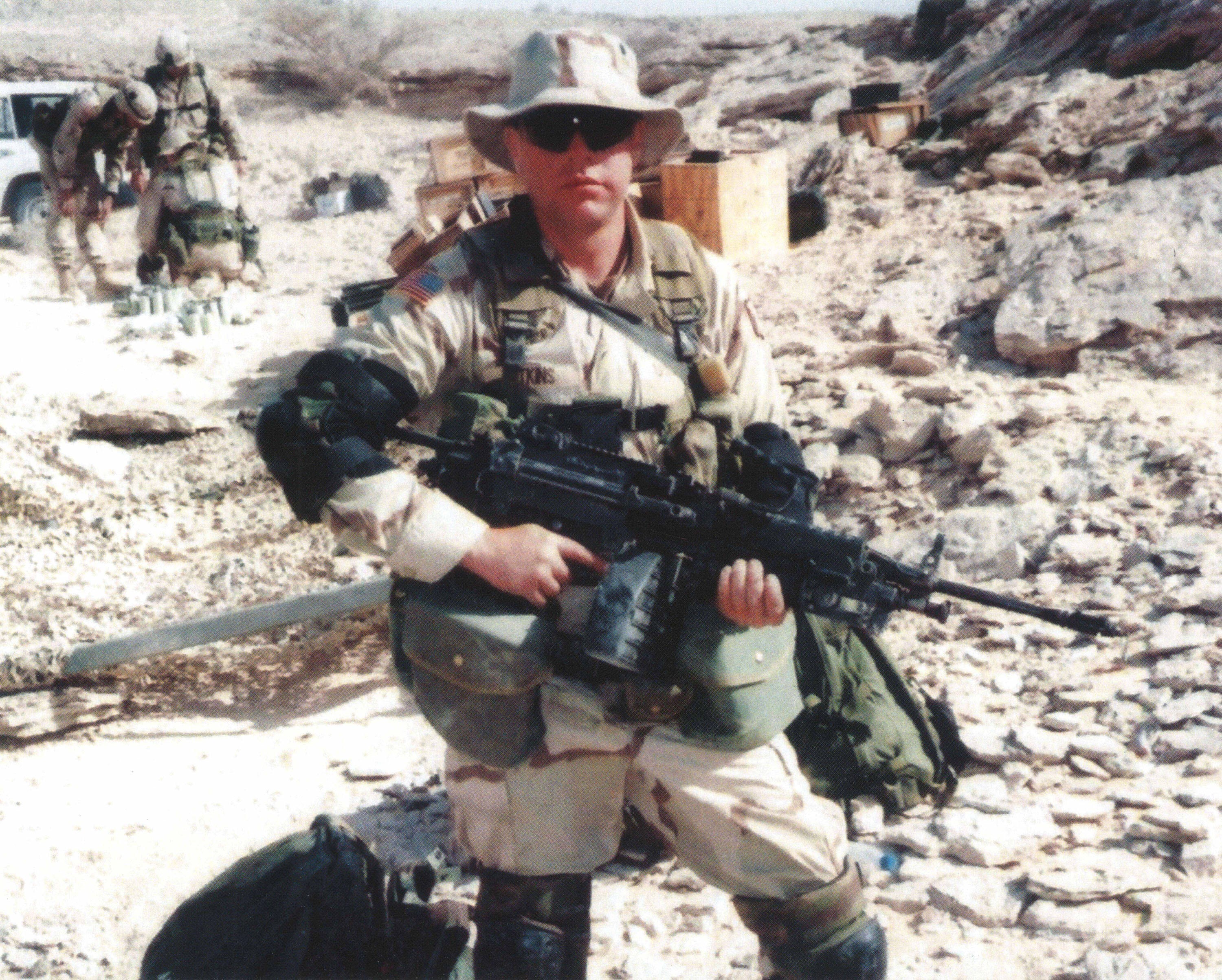
A short time later, his enlistment was up. He was willing to stick around. But he wanted something from the Army first.
He wanted to go to the 501st Airborne Infantry Regiment at Fort Richardson, Alaska.
Sorry, corporal, there were no slots, they told him.
“Travis had a very distinct concept of right and wrong and what he wanted to do,” Jack said. So, with no slots, he left the Army, returned to Montana and went back to school.
But civilian life didn’t stick, so Travis signed back up in 2005 and was assigned to the 10th Mountain Division at Fort Drum, New York.
Jack and Travis talked before he rejoined the service.
“When he was going to reenlist I said to him, 'Travis, you paid your dues. Change your MOS,” Jack said.
He wouldn’t hear of it.
“He says, ‘dad ... I’m infantry,’" Travis said.
Training for his next deployment began soon after and he took on his team leader tasks with intensity, prepping many of the soldiers who hadn’t seen combat for a mission in what would they would later learn would be some of the deadliest years in OIF.
Late in the workups there was a gap in D Company, 2nd Battalion, 14th Infantry Regiment, 2nd Brigade Combat Team. Though he’d spent most of the past months building his soldiers into a cohesive team, he took on the task.
At first, the hard-driving team leader annoyed Sgt. Sand Aijo. He and his soldiers were ready to go, why was this new guy hammering home on all of these details they’d already covered?
“When he first became my team leader, then squad leader, I hated it,” Aijo said in an interview this week. “I was a 19-year-old kid, cocky, I thought I knew everything and he came in and he put me in my place but he did it in the best way possible because when that day happened I was prepared and I acted appropriately.”
The unit deployed in August 2006 to Baghdad, Iraq. They were assigned an area whose southernmost boundary was the Euphrates River between them and Anbar province, said Travis’ then-Lt. Col. John Valledor, the battalion commander at the time. He later retired as a colonel.
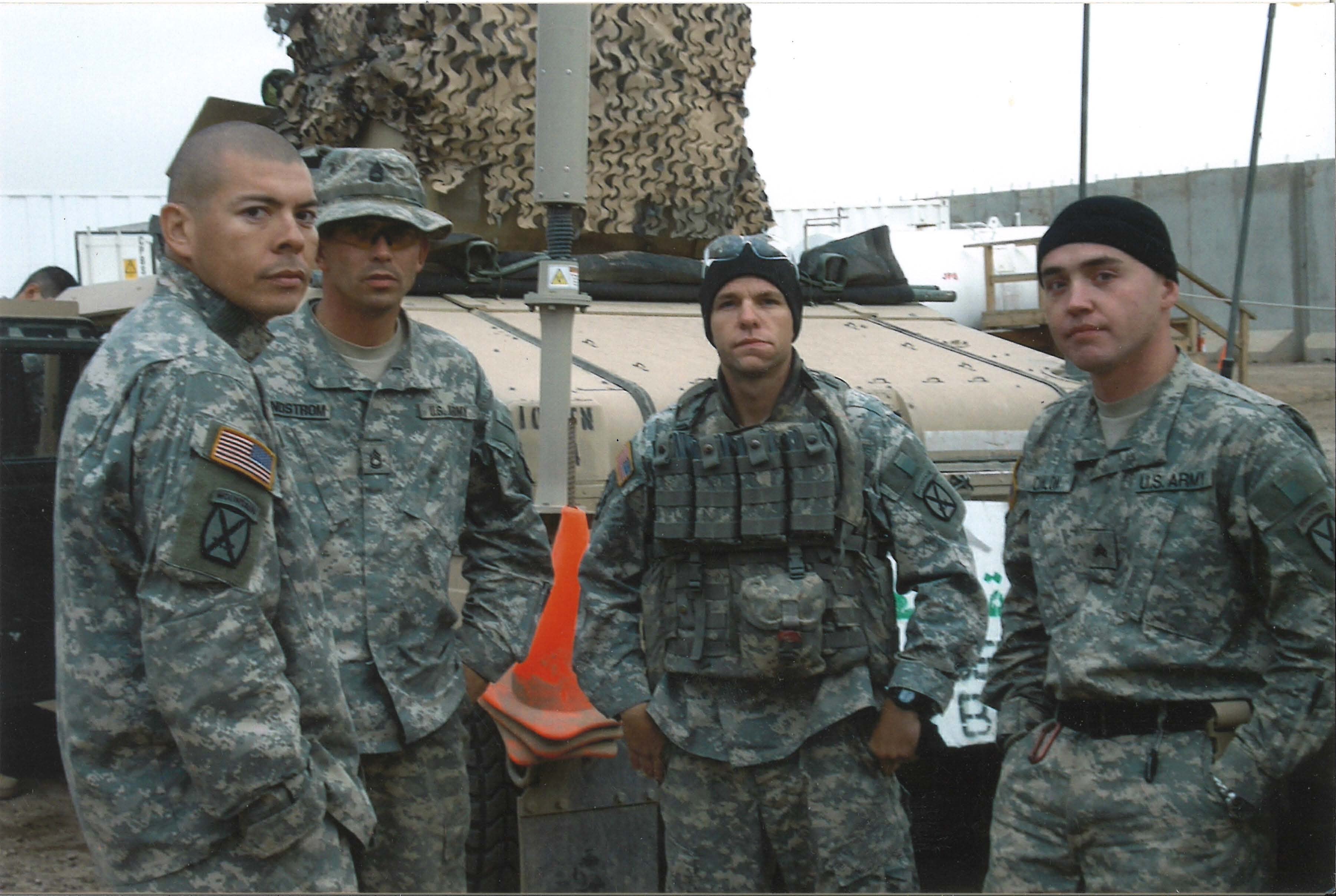
They expected to spend 12 months on the ground.
Another newcomer was their company commander, then-Capt. Alex Ruschell, who joined them in the last weeks before they headed over.
“On my first patrol with his platoon he instantly put me at ease,” Ruschell said. “He asked me, sir, you got kids? Where are you from? He did that with everybody.”
“He had this gift for being able to influence,” Ruschell said.
A large part of their mission was route security and Travis’ platoon drove Route Caprice hundreds of times over the ensuing months.
On one patrol, Aijo remembers the radio crackled with reports of suspicious men in the area with a rifle.
Aijo, the truck’s .50 caliber machine gunner, stayed in his turret, providing overwatch. Travis took other soldiers on foot patrol to find the men.
The gunner remembers it was tense. They spent a lot of time in their vehicles. A foot patrol to hunt down men with a rifle could be a tense, decision-heavy situation.
But Travis kept his cool and so did his soldiers. It turns out the men were carrying an air rifle to hunt pigeons for food. He confiscated the air rifle, more for the safety of the men so they wouldn’t get shot by mistake.
He also paid them some of his own money for the air rifle so they could buy food, Aijo said.
Over the next weeks and months, the air rifle would provide entertainment as the soldiers would try their best to hit anything with the decidedly subpar weapon.
“It was a pile of garbage, you could not hit anything,” Aijo recalled, laughing.
During those months they continued their patrols, spending nearly every hour of the days in the truck together.
A few months into the deployment, then-Pfc. Jared Venable joined the unit. When the unit had deployed, he was still in basic training.
“I was 18 years old. Frankly, I was just really scared,” Venable said.
They told him to go see his new team leader.
“I just immediately felt … it’s hard to explain. I don’t want to say calmness because you can’t be completely calm in that situation but he made me feel like there was a chance he was going to be able to … that I was going to be able to trust him and there was somebody there that knew what they were doing,” he said.
Late in the deployment, Valledor was traveling the area, checking on his troops when he came down one of their regularly traveled routes to see Travis standing by a destroyed Humvee.
He began talking to this NCO who was joking with him about how now he had to come up with a new vehicle and, “How was I going to get him a new vehicle to continue his mission?”
It would be one of two IED blasts Travis survived during the deployment.
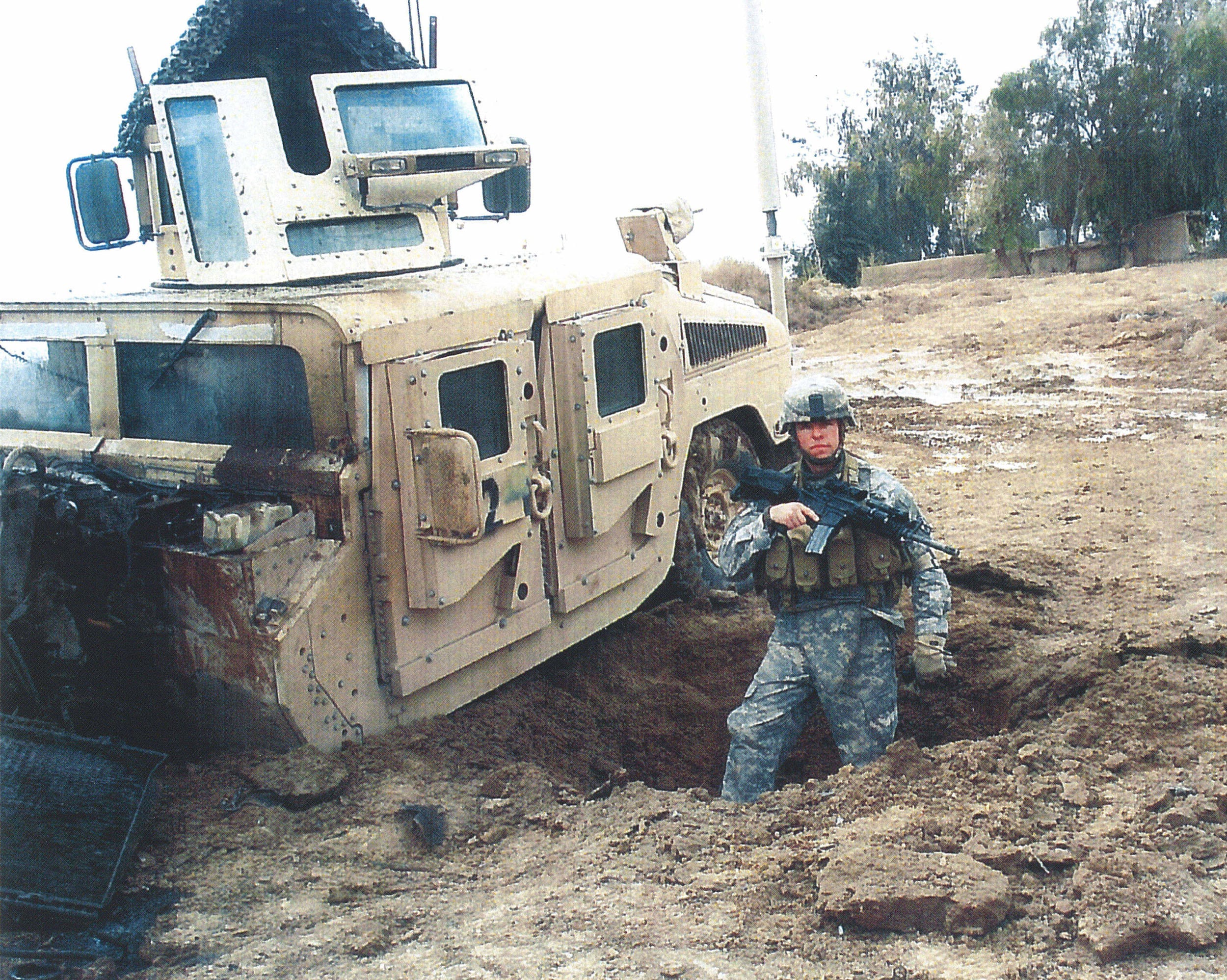
On June 1, 2007 Travis called his mother and father at around 2:30 a.m. in Montana. They hadn’t heard from their 31-year-old son in weeks and they were relieved. Before he hung up, he told them he had to go out on patrol. The deployment was supposed to be over in two more months.
Later that day, Travis was sitting in the front passenger side seat of his Humvee. Aijo was in the turret and the platoon medic was in the back seat.
They were listening to radio traffic, waiting on reports from the other Humvees. Travis was calling out targets around the truck for Aijo to plink the air rifle at.
The last one was at 11 o’clock, near the front passenger side of the truck, Aijo recalled.
He missed it.
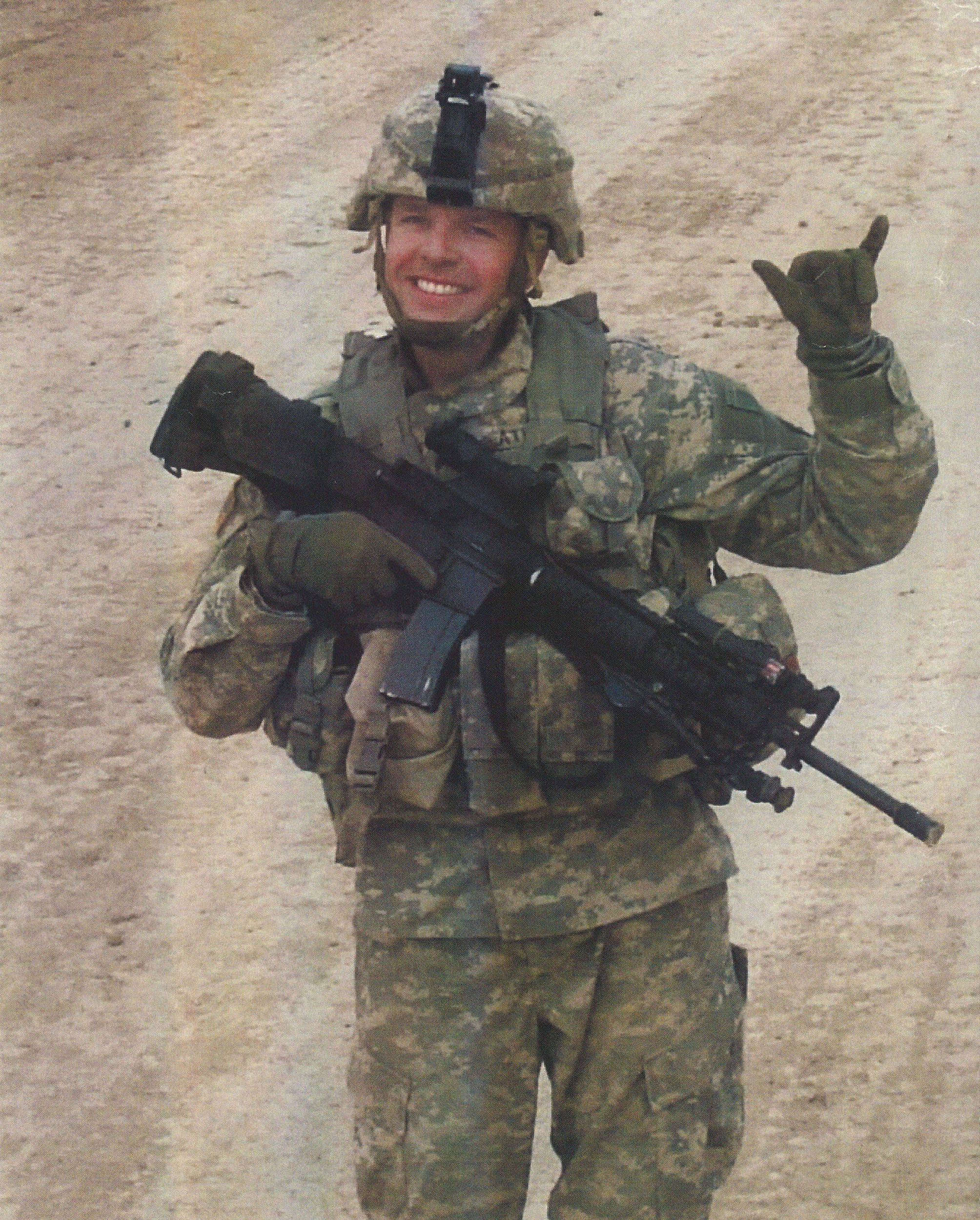
Then the radio crackled. A vehicle a few hundred yards up was calling back that there were four suspicious-looking men in an area where they shouldn’t be.
They fired up the truck and sped down Route Caprice, steep ditches on each side, reeds as high as 10 feet tall along both sides. Where they pulled up there was a driveway to a mosque on the right and some huts in a small village on the left.
The four men had now become two men.
Aijo racked the .50 caliber and pointed it at them, making it clear they should not move.
“They were very fidgety,” Aijo said. “They have this very glassy look in their eyes.”
Travis and the medic got out of the vehicle to separate the men. Aijo trains his eyes on the medic, who’s not infantry. Travis can handle himself.
Out of the corner of his eye he notices Travis and the man scuffle. Suddenly Travis grips him in an almost bear hug embrace and slams the man to the ground.
“Honestly, the first thought that crossed my head was just how impressive the slam was,” Aijo said.
But in seconds the scene turned strange. Once they hit the ground, Travis was moving his body over the man and to the side, between him and the medic and the truck.
“And that’s when the detonation happened,” Aijo said. In an instant, he thought they’d rolled onto an IED in the road.
But a grenade-detonated vest filled with ball bearings and other shrapnel had been mostly absorbed by Travis’ body.
The other man began to rush the Humvee. The medic fired, emptying a magazine. Aijo had switched to his M4 carbine and he too was firing. The driver had started to exit the vehicle as the charging man pulled his grenade pin on his own vest.
He lunged into the vehicle but slumped out before the blast.
“Where we operated, suicide bombers were not common,” Aijo said. “It was something that we had never encountered before.”
Back at the unit headquarters, Venable had just returned from leave and was drawing his weapon while checking in. The radio traffic relayed what had happened. He snatched up his gear as part of the Quick Reaction Force.
They rushed to the scene to provide security. There was nothing to be done for Travis.
Aijo continued to man his machine gun at the scene.
After the patrol ended, he returned to headquarters. The chaplain came out of the tent and hugged Aijo.
“He wrapped me in a hug and I cried for 10 or 15 minutes,” he said. “Once it was out for me, that was my time to let it out, move on and continue the mission. You still have to make it home safe, everybody else has to make it home safe.”
Back near Bozeman, Jack and Elaine were going about their day. Elaine had come to their home to check on some work being done and then headed back out. The retired nurse had things to do.
As she drove out of the rural road they lived on she noticed a car with two uniformed soldiers in it. She saw one of them wore the infantry blue cord on his right soldier.
She was puzzled, because a Marine lived on their road but few others. She watched.
They pulled into her driveway.
She turned around and asked them who they were looking for. They wanted to know who she was.
She said, Elaine Atkins.
They asked if she could get her husband to come home.
As they sat there, hearing the official words that Travis was gone, Elaine didn’t quite believe what she was being told.
Only a short time ago she’d read in the newspaper about how a family had been falsely notified because their son’s name was a common one and the casualty assistance officers had made a mistake.
But this was no mistake.
Very shortly after the visit, she got a call confirming that Travis was gone.
They knew few details of his passing.
Across the country, in Minnesota, Trevor was nearing the end of his school year. The 11-year-old boy had locked himself out of the house near lunchtime and his mom had to come home.
Years later, he’s thankful she did.
She arrived, let him in and was getting ready to return to work when two uniformed men, also wearing blue cords that Daddy wore, knocked on the door.
They came in. They sat down. They shared the news. They shared scripture.
As the deployment rolled on, it extended beyond the 12 months to 15 months. In a surprise to the unit they had become part of the “Surge” while in theater. They would see their trying combat deployment go on and try as they could to pass on their hard-won knowledge to the next unit.
Shortly after Travis died, another man tried another attack but on a much larger scale.
Nine days after those two grenade-triggered suicide vest bombers hurled themselves at Travis’ truck, another man rumbled a dump truck laden with 10,000 pounds of explosives toward the front gate of one of the unit’s patrol bases, Valledor said.
An M240 machine gunner on the rooftop spotted the vehicle as it barreled his way and laid down lead that stopped the would-be attacker dead.
That was the last suicide bomber the soldiers of that part of 10th Mountain Division faced in that deployment. And in the days and weeks that followed, Sunni tribesman came out of their normally reclusive patterns and told the troops they would help them hunt al-Qaida.
Their extended deployment witnessed the birth of the “Sunni Awakening,” that helped squelch the sectarian violence that was daily life in Iraq.
As the deployment rolled on, Valledor read and re-read reports of what Travis had done. He dug deeply into Army history, seeing how soldiers from World War II to Korea to Vietnam had, in calamitous moments, thrown their bodies, their lives onto grenades to save their comrades.
Many of them had received the nation’s highest honor.
Why not Travis?
So, he documented the bravery and valor of that day. He had witness statements, he had selfless sacrifice. It all made sense.
“It occurred to me there was a similar pattern of former Medal of Honor recipients who had jumped on grenades," Valledor said. “The only difference here was that it was a living grenade that Travis had overpowered and then used his body to protect against his fellow soldiers.”
Army answer: nope.
The lieutenant colonel regrouped like a good commander. He ran his thoughts through the chain of command.
“I think the consensus was we were probably too close to it,” he said.
They decided a formal investigation, along with the initial recommendation, would lay out the facts. Then, by blending that with the narrative of what had happened, those outside of the chain of command who were not as “emotionally invested” in Travis’ actions might see what happened more clearly.
On Aug. 2, 2008, the Army awarded Travis the second-highest honor for valor that it can bestow — the Distinguished Service Cross.
It was a happy day for his fellow soldiers, for his family, for his battalion commander. It was enough in their minds at the time.
But the wheels of time keep turning. A wider review begun in 2016 ordered by President Donald Trump found that the Pentagon could do more for this soldier and his family.
Last August, a phone rang in Trevor Oliver’s home. He was told that it was the White House and they’d be calling back soon. Soon after, a call went out to the Atkins’ home in Montana with a similar message.
Both thought it was some kind of scam.
Instead they were treated to happy news, news that further honored the loss they’d felt for more than a decade and will for the rest of their lives — Travis would receive the Medal of Honor.
And now, the 22-year-old man who has lived half of his life without the man he called Daddy, will hold a symbol of all that man gave for his soldiers, the other part of his family.
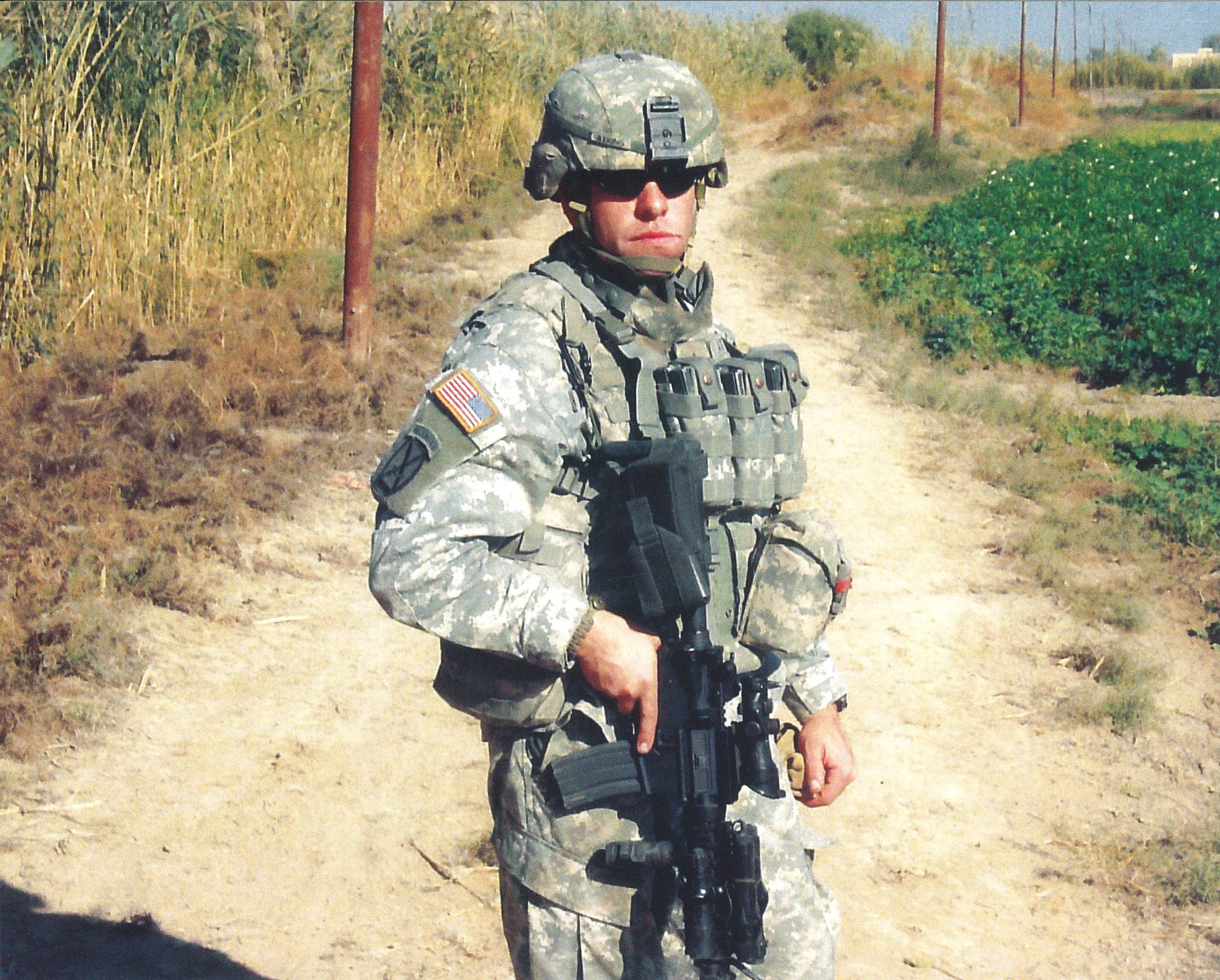
Todd South has written about crime, courts, government and the military for multiple publications since 2004 and was named a 2014 Pulitzer finalist for a co-written project on witness intimidation. Todd is a Marine veteran of the Iraq War.



